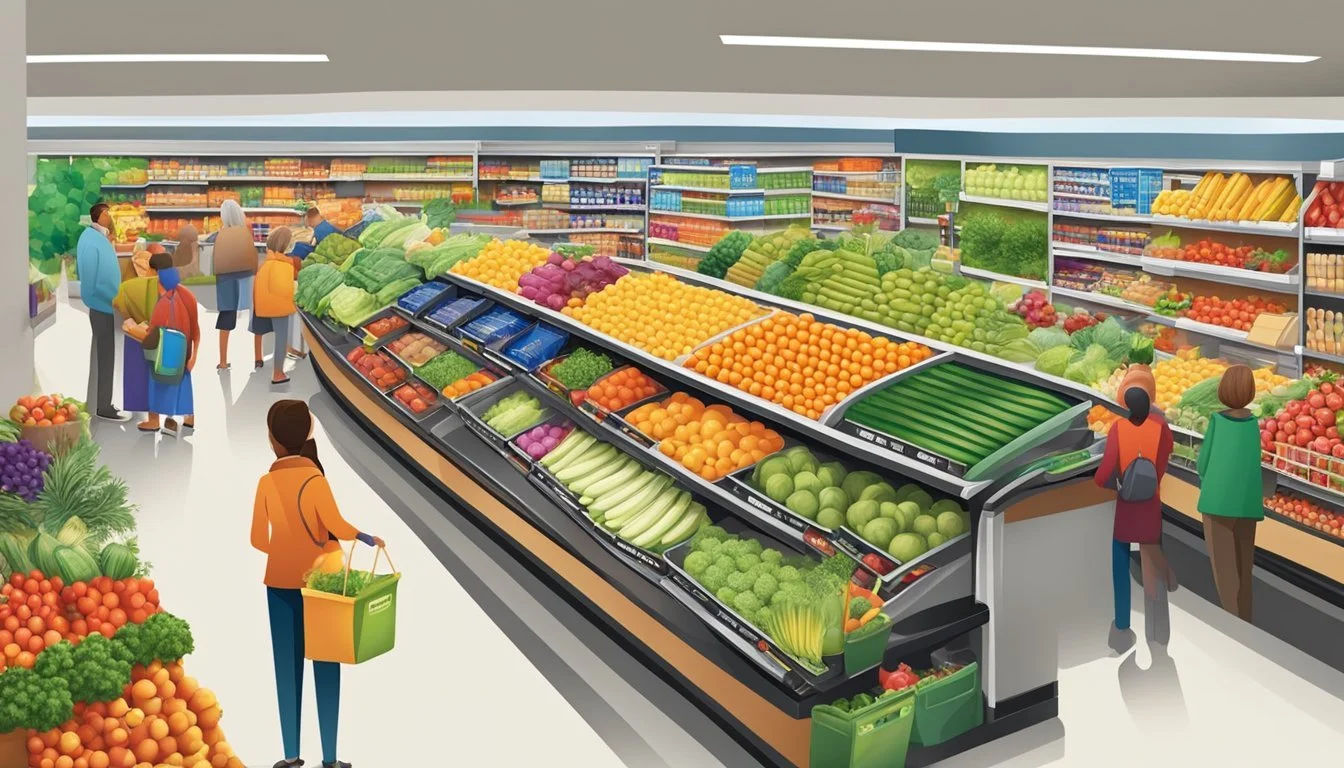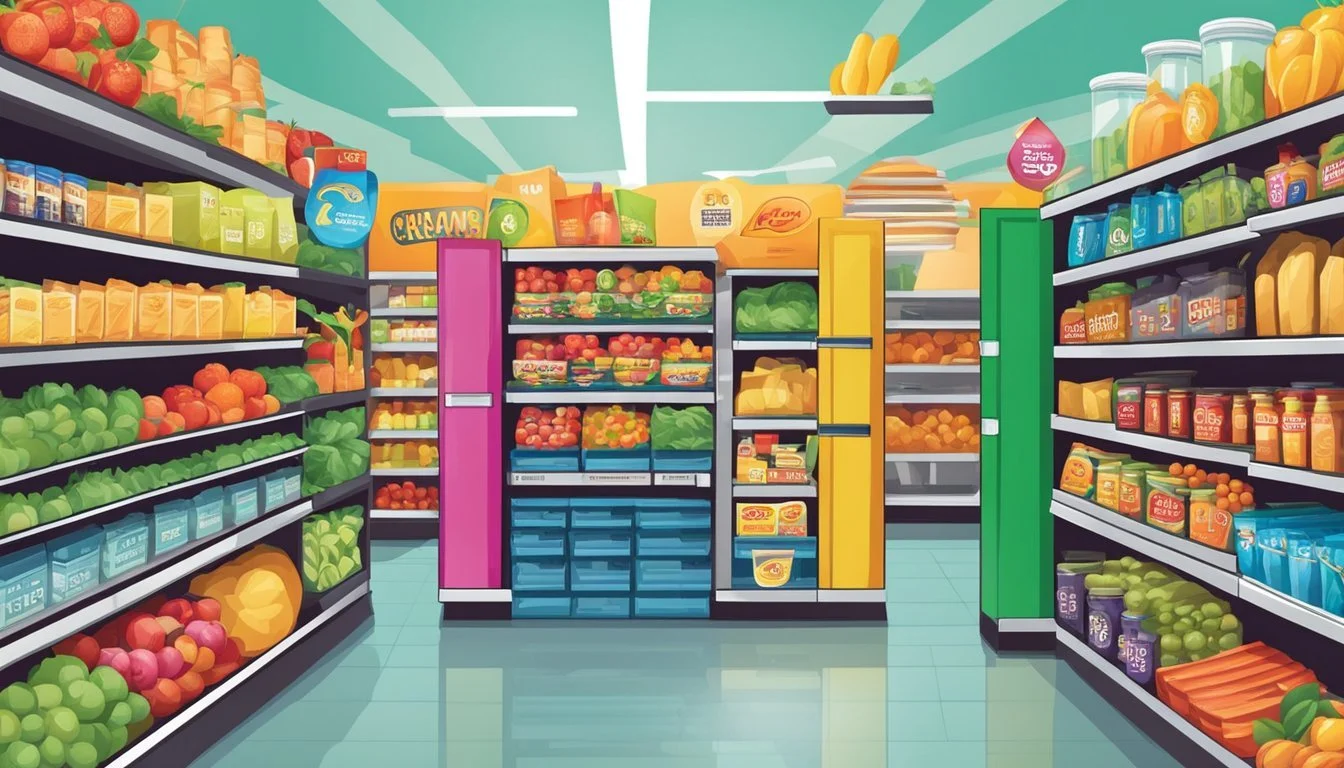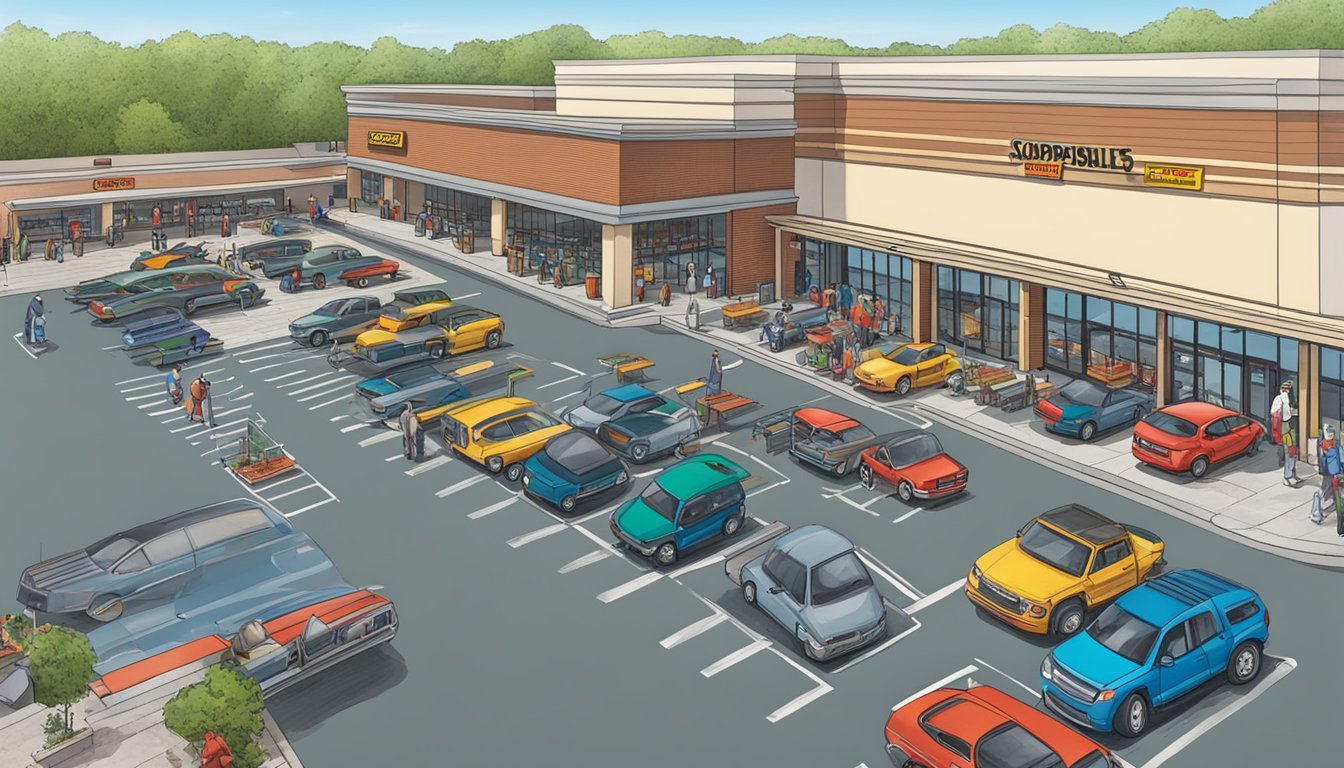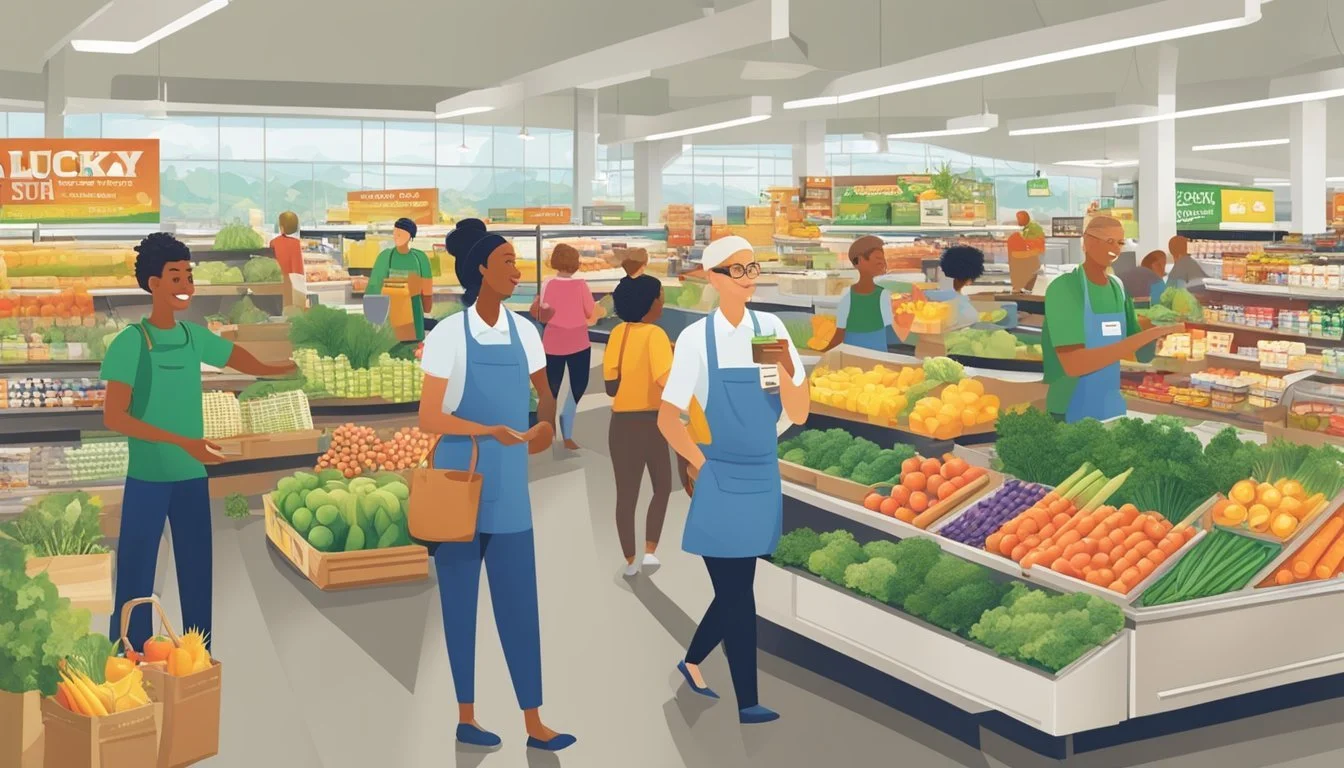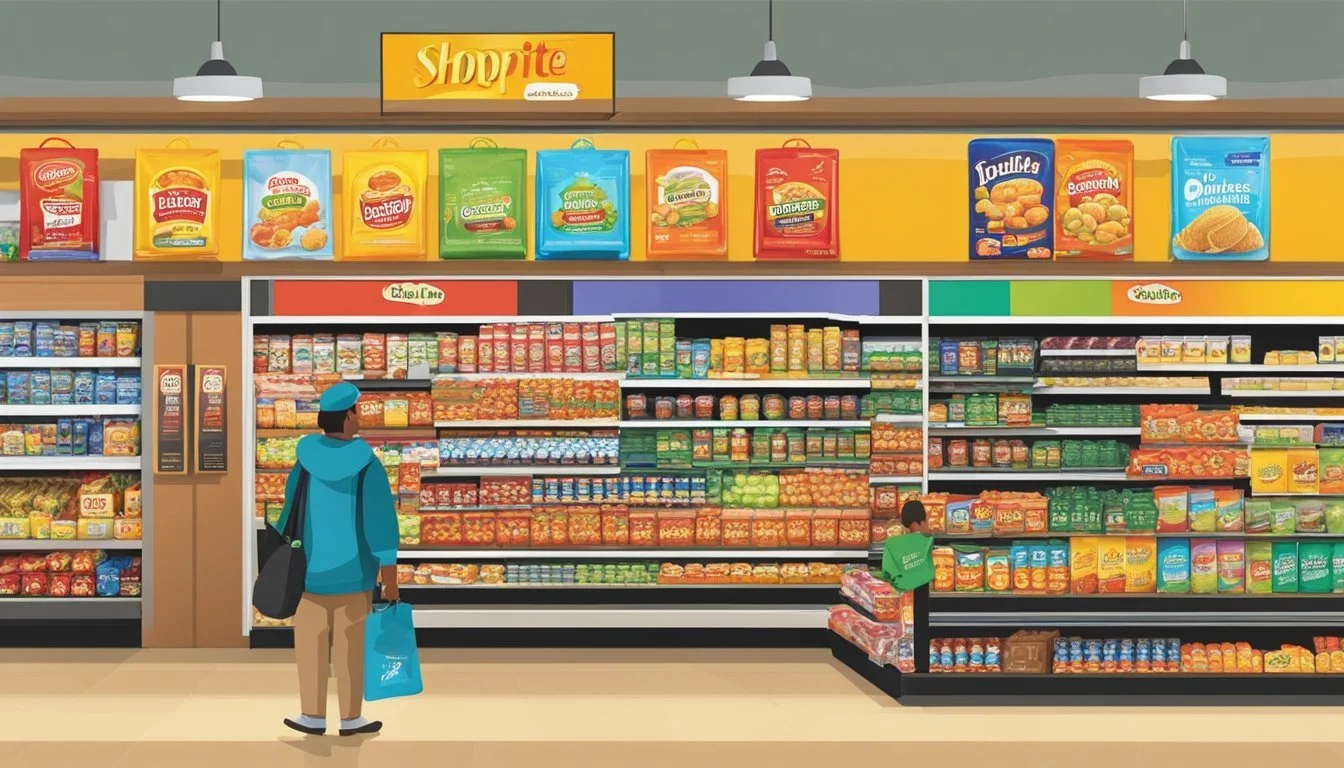Lucky Supermarkets vs Shoprite
A Comprehensive Comparison
Lucky Supermarkets and ShopRite are two well-known grocery store chains that cater to customers in different regions of the United States. Both offer a wide range of products and services to meet shoppers' needs, but they have distinct characteristics that set them apart.
ShopRite operates as a cooperative of independent retailers in the northeastern United States. It has a long history dating back to the 1940s when a group of small grocers joined forces to increase their buying power and profitability. ShopRite's cooperative structure allows individual store owners to tailor their offerings to local preferences while benefiting from the collective strength of the brand.
Lucky Supermarkets, on the other hand, is a smaller chain primarily serving communities in Northern California. While not as widespread as ShopRite, Lucky Supermarkets focuses on providing competitive prices and a diverse product selection to its customers. Both chains strive to offer value and convenience to shoppers, making the choice between them largely dependent on location and personal preferences.
History and Brand Overview
Lucky Supermarkets and ShopRite have distinct histories and brand evolutions that have shaped their market presence today. Both chains have developed unique identities and loyal customer bases in their respective regions.
Lucky Supermarkets Brand Evolution
Lucky Supermarkets began as a small chain in the San Francisco Bay Area in 1935. Founded by Charles Crouch, the company expanded rapidly throughout Northern California in the following decades. Lucky's focus on affordable prices and quality products helped it gain popularity among local shoppers.
In 1998, Albertsons acquired Lucky Supermarkets, rebranding the stores under its own name. However, in 2006, Save Mart Supermarkets purchased the Northern California Albertsons locations and revived the Lucky brand. This decision aimed to capitalize on Lucky's strong brand recognition and nostalgic appeal in the region.
ShopRite's Market Presence
ShopRite's roots trace back to 1946 when a group of independent grocers in New Jersey formed a cooperative. This alliance allowed them to compete more effectively with larger chain stores. The cooperative structure remains a key feature of ShopRite's business model today.
ShopRite has grown to become a dominant player in the northeastern United States. The chain operates over 300 stores across six states: New Jersey, New York, Connecticut, Pennsylvania, Delaware, and Maryland. ShopRite's success stems from its ability to offer competitive prices while maintaining local ownership.
Each ShopRite store is independently owned and operated, allowing for customization to meet local community needs. This approach has helped ShopRite build strong brand loyalty and maintain a significant market share in its operating regions.
Store Layout and Shopping Experience
The layout and atmosphere of a grocery store significantly impact the overall shopping experience. Both Lucky Supermarkets and ShopRite have distinct approaches to organizing their stores and serving customers.
Navigation and Aesthetics
Lucky Supermarkets typically feature a clean, open layout with wide aisles for easy navigation. Their produce section is often located near the entrance, showcasing fresh fruits and vegetables. ShopRite stores tend to have a more traditional layout, with departments arranged around the perimeter and aisles in the center.
Lucky's stores often incorporate modern design elements and bright lighting, creating an inviting atmosphere. ShopRite stores may vary in appearance, as many are independently owned and operated.
Both chains prioritize clear signage to help customers locate items quickly. However, Lucky Supermarkets sometimes employs a more minimalist approach to store decor.
Checkout Efficiency
Lucky Supermarkets generally offer a mix of traditional checkout lanes and self-checkout options. Their focus on efficiency often results in shorter wait times during peak hours.
ShopRite stores usually have numerous checkout lanes to accommodate high customer volumes. Many locations have embraced technology, implementing scan-as-you-shop systems and mobile payment options.
Both chains strive to maintain adequate staffing at checkouts to minimize customer wait times. Lucky Supermarkets may have a slight edge in terms of checkout speed due to their typically smaller store sizes.
Customer Service Quality
Lucky Supermarkets emphasizes personalized service, with staff trained to assist customers in locating items and answering product questions. Their smaller store format often allows for more direct interactions between employees and shoppers.
ShopRite stores, while larger, maintain a commitment to customer service through well-staffed departments. Many locations offer specialized services like in-store nutritionists and cooking demonstrations.
Both chains have implemented customer loyalty programs and digital apps to enhance the shopping experience. Lucky Supermarkets tends to focus on a more intimate, community-oriented approach, while ShopRite leverages its size to offer a wide range of services and support.
Product Range and Availability
ShopRite and Lucky Supermarkets offer diverse product selections to cater to various customer needs. Both chains strive to provide a wide array of options across different categories.
Variety of Brands Offered
ShopRite stocks a comprehensive range of national brands alongside its own private label products. The store's shelves feature well-known names in groceries, snacks, and household items.
Lucky Supermarkets also carries popular national brands but places a stronger emphasis on local and regional products. This focus gives shoppers access to unique items from nearby producers.
Both chains offer a mix of premium and budget-friendly options across categories like rice, canned goods, and pantry staples. ShopRite's private label line spans numerous product types, while Lucky's house brand selection is more limited but growing.
Fresh Produce and Organic Options
ShopRite dedicates significant floor space to fresh produce, featuring a wide variety of fruits and vegetables. The chain has expanded its organic offerings in recent years, responding to increased consumer demand.
Lucky Supermarkets prides itself on locally sourced produce when possible. Their stores often highlight seasonal fruits and vegetables from regional farms.
Both chains stock organic options, but ShopRite typically offers a broader selection. Lucky's focus on local sourcing may result in a more limited but fresher organic produce section.
Specialty Departments
ShopRite stores often include extensive deli and bakery sections. Many locations feature full-service meat counters and seafood departments. The chain has expanded its prepared foods offerings, with some stores including hot food bars and sushi stations.
Lucky Supermarkets also maintain deli and bakery departments, though the size and scope may vary by location. Their meat departments emphasize quality and often include specialty cuts.
Both chains stock health and beauty products, with ShopRite typically offering a larger selection. Pet supplies are available at both stores, but ShopRite usually provides more variety in this category.
Pricing and Savings
Price-conscious shoppers will find notable differences between Lucky Supermarkets and ShopRite. Both chains offer competitive pricing strategies and savings opportunities, but their approaches vary in key ways.
Comparison of Everyday Prices
Lucky Supermarkets typically maintains mid-range prices on everyday items. Their regular pricing tends to be slightly higher than discount chains but lower than premium grocery stores. ShopRite, on the other hand, is known for its aggressive pricing on staple goods.
ShopRite often beats Lucky on common household items and pantry staples. For example, a gallon of milk or a loaf of bread may cost 10-15% less at ShopRite. However, Lucky Supermarkets frequently offers better deals on fresh produce and specialty items.
It's worth noting that prices can vary by location and season for both chains. Shoppers should compare prices on their most frequently purchased items to determine which store offers better value for their specific needs.
Discounts and Deals Availability
Both Lucky Supermarkets and ShopRite run weekly sales and promotions. ShopRite tends to offer a wider variety of deals across more product categories. Their circular often features deep discounts on popular brands and bulk purchases.
Lucky Supermarkets focuses on targeted promotions, especially for fresh items. They frequently run "mix and match" deals on produce and meat, allowing customers to save when buying multiple items.
ShopRite's "Can Can Sale" and other annual events provide opportunities for significant savings. Lucky counters with seasonal promotions tied to holidays and local events.
Digital coupons and app-exclusive offers are available from both chains, though ShopRite's digital platform tends to be more robust and user-friendly.
Loyalty Programs and Coupons
ShopRite's Price Plus card is a standout loyalty program. It offers personalized deals, gas rewards, and digital coupon integration. Members can accumulate points for additional savings and special promotions.
Lucky Supermarkets' rewards program is more basic but still provides value. Members receive exclusive discounts and can earn points towards future purchases.
Both chains accept manufacturer coupons, but ShopRite is known for its more generous coupon policies. They often allow coupon stacking and have fewer restrictions on usage.
Lucky Supermarkets emphasizes digital coupons through their app, making it easy for tech-savvy shoppers to save. ShopRite offers both digital and printable coupons, catering to a wider range of customer preferences.
Accessibility and Convenience
Lucky Supermarkets and ShopRite differ in their accessibility and convenience offerings. Both chains provide various options to meet customer needs, from physical store locations to online shopping services.
Store Locations and Hours
Lucky Supermarkets primarily operates in Northern California, with around 70 stores concentrated in the San Francisco Bay Area and surrounding regions. Most Lucky stores are open daily from 6 AM to 12 AM, offering extended hours for customer convenience.
ShopRite has a broader presence, with over 300 stores across six Northeastern states. ShopRite locations typically operate from 7 AM to 11 PM, though hours may vary by store. This wider geographic footprint gives ShopRite an edge in terms of accessibility for customers in its service areas.
Online Shopping and Delivery Services
Lucky Supermarkets partners with Instacart for online grocery ordering and delivery. Customers can browse products, create shopping lists, and schedule deliveries through the Instacart platform. Same-day delivery is available in many areas.
ShopRite offers its own online shopping platform called "ShopRite from Home." Customers can order groceries for delivery or pickup at their local store. ShopRite also provides a mobile app for convenient ordering on the go. Delivery fees and minimum order requirements vary by location.
Both chains have embraced digital services to enhance customer convenience. ShopRite's in-house platform may offer more integration with store-specific promotions and loyalty programs compared to Lucky's third-party partnership.
Community and Sustainability Efforts
Both Lucky Supermarkets and ShopRite engage in initiatives to support their communities and promote sustainability. These efforts encompass corporate social responsibility programs and environmental measures aimed at reducing their ecological footprint.
Corporate Social Responsibility
Lucky Supermarkets focuses on local community engagement. They partner with food banks to donate surplus groceries, helping address food insecurity in their operating areas. The company also sponsors youth sports teams and educational programs in nearby schools.
ShopRite takes a broader approach to corporate responsibility. They work with One Tree Planted, committing to plant 25,000 saplings in areas needing reforestation. This initiative helps combat deforestation and promotes biodiversity.
ShopRite also runs a hunger relief program called "ShopRite Partners in Caring." This program has donated millions of dollars to local food banks and pantries since its inception.
Environmental Initiatives
Lucky Supermarkets has implemented energy-efficient lighting and refrigeration systems in their stores. They've also introduced reusable bag programs to reduce plastic waste. The company encourages customers to bring their own bags or purchase reusable ones at checkout.
ShopRite has made strides in sustainable packaging. They've reduced plastic use in their private label products and introduced more recyclable packaging options. The company also operates a robust recycling program for plastic bags and other materials in many of their stores.
Both retailers have increased their offerings of locally sourced produce. This practice supports local farmers and reduces transportation-related emissions. ShopRite and Lucky Supermarkets also stock a growing selection of organic and eco-friendly products to meet consumer demand for sustainable options.
Customer Feedback and Reputation
Customer opinions and online presence play crucial roles in shaping the reputations of Lucky Supermarkets and ShopRite. Both chains receive mixed feedback, with strengths and weaknesses highlighted by consumers.
Consumer Surveys and Reviews
Recent surveys indicate ShopRite generally ranks higher in customer satisfaction. A notable industry report placed ShopRite among the top 10 supermarkets nationwide, while Lucky Supermarkets did not make the list. Shoppers praise ShopRite for its wide selection of produce and competitive prices.
Lucky Supermarkets receives positive feedback for its local focus and community involvement. Customers appreciate the fresh vegetables and personalized service at Lucky stores.
Both chains face criticism for long checkout lines during peak hours. ShopRite customers occasionally report issues with product availability, while Lucky shoppers sometimes mention higher prices compared to larger competitors.
Social Media and Online Presence
ShopRite maintains a strong social media presence, with active Facebook and Twitter accounts sharing promotions and recipes. The chain's website offers online shopping options and digital coupons, appealing to tech-savvy consumers.
Lucky Supermarkets has a more modest online footprint. Their Facebook page features local events and community initiatives, resonating with their target audience. The Lucky website provides basic store information but lacks advanced features like online ordering.
Both chains use email marketing to reach customers. ShopRite's digital strategy appears more comprehensive, with a dedicated mobile app for shopping lists and exclusive deals. Lucky focuses on building personal connections through in-store experiences rather than extensive online engagement.
Financial Options and Policies
Lucky Supermarkets and ShopRite offer various payment methods and financing options to customers. Both stores have established return policies and price adjustment procedures to enhance shopper satisfaction.
Payment Methods and Financing
Lucky Supermarkets and ShopRite accept major credit cards, debit cards, and cash. ShopRite provides additional flexibility with Shop Pay Installments, allowing customers to split larger purchases into smaller payments.
PayPal Pay Later is available at ShopRite, giving shoppers the option to buy now and pay later in installments. This can be helpful for budget-conscious customers or those making larger grocery purchases.
Apple Pay Later financing is not currently offered at either store. However, both accept Apple Pay as a payment method for added convenience.
Return and Price Adjustment Policies
ShopRite has a customer-friendly return policy. Shoppers can return most items with a receipt for a full refund or exchange. Perishable goods have stricter return guidelines for food safety reasons.
Lucky Supermarkets also allows returns, but specific policies may vary by location. It's advisable to check with the local store for detailed information.
Price adjustment policies differ between the two chains. ShopRite often honors price matches with local competitors and adjusts prices on recently purchased items if they go on sale shortly after.
Lucky Supermarkets' price adjustment policies are less widely publicized. Customers should inquire at their local store for specific details on price matching and adjustments.
Promotions and Marketing Strategies
Lucky Supermarkets and ShopRite employ diverse promotional tactics and marketing strategies to attract customers and boost sales. Both chains utilize advertising campaigns, membership programs, and special offers to entice shoppers.
Advertising Campaigns and Sales Events
Lucky Supermarkets runs targeted local ads highlighting weekly specials and seasonal promotions. They often feature "Lucky Finds" - limited-time deals on popular items. ShopRite's marketing focuses on their low prices and wide product selection.
ShopRite's "Can Can Sale" is a major annual event, offering deep discounts on canned goods. Lucky counters with "Lucky Days" - multi-day sales events spread throughout the year.
Both chains use social media and mobile apps to promote deals. ShopRite's digital circular reaches millions, while Lucky's app sends personalized offers to users.
Exclusive Offers and Membership Benefits
ShopRite's Price Plus club card provides members with exclusive discounts and digital coupons. The program tracks purchases, offering tailored deals based on shopping habits.
Lucky's rewards program gives points for each dollar spent, redeemable for discounts on future purchases. Members also receive birthday offers and early access to sales.
Both stores offer digital coupons through their apps and websites. ShopRite's "Digital Coupon Center" and Lucky's "Load2Card" feature allow easy savings at checkout.
Lucky's clearance page on their website highlights deeply discounted items. ShopRite sends a weekly email newsletter with top deals and recipes using sale ingredients.
Additional Policy Comparisons
Lucky Supermarkets and ShopRite offer various policies to attract customers. These include competitor coupon acceptance and special discounts for different demographic groups.
Competitor Coupon Acceptance
Lucky Supermarkets accepts coupons from major competitors within a certain radius. This policy allows customers to save money even if they find better deals elsewhere.
ShopRite also honors competitor coupons, but their acceptance may vary by location. Some ShopRite stores double coupons up to a certain value, providing additional savings.
Both chains typically require the competitor's coupon to be valid and for identical items. Customers should check with their local store for specific details on coupon acceptance policies.
Special Discounts for Various Demographics
Lucky Supermarkets offers a 5% discount to seniors on select days. Veterans and active military personnel receive a 10% discount on Veterans Day and Memorial Day.
ShopRite provides a 5% senior discount on Tuesdays at participating locations. They also offer periodic discounts for students during back-to-school seasons.
Neither chain currently has widespread discounts for teachers or government workers. However, some individual stores may offer special promotions or discounts for essential workers during specific times.
Both supermarkets occasionally run birthday discount promotions through their loyalty programs. These offers typically include a free item or percentage off a purchase during the customer's birthday month.


